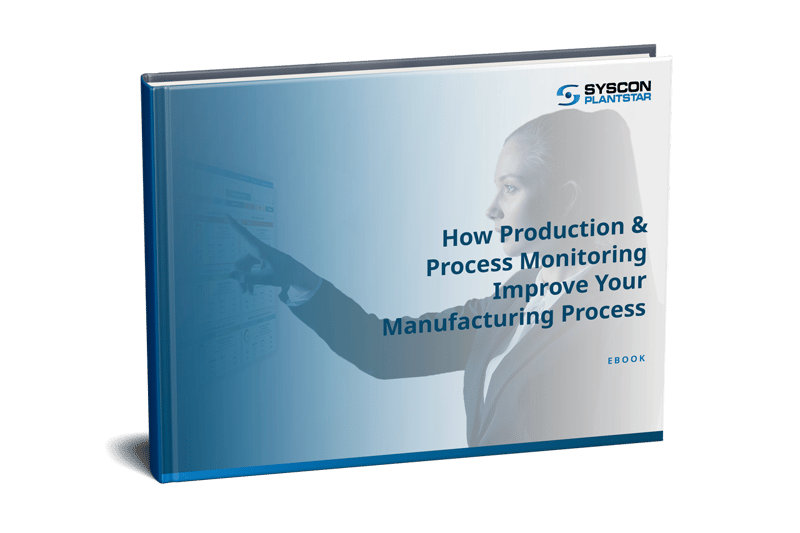PlantStar BLOG
MES Empowers Manufacturers to Reduce Changeover Time
Oct 6, 2022 5:15:00 PM / by PlantStar Team

In today’s highly competitive market, manufacturers feel constant pressure to improve production efficiency while still meeting client needs. Customers have been demanding more personalized products, so manufacturers adapted and have more small, targeted production runs. As a result, changeover time is rising and eating into their efficiency and profits. A Manufacturing Execution System (MES) solution provides them with the tools to mitigate such fallout.
Manufacturing is a dynamic process, one with many constantly moving pieces. Most manufacturing plants create multiple products during the day, varieties (say different colors) of one product, or completely different items. Manufacturers want to maximize the use of their equipment, so one line often produces variations and different items. However, changes have to be made in order for it to shift from one product to another. Ideally, suppliers minimize the time needed to make such alterations, but customer demand is forcing them to change more frequently.
What are Changeovers?
As a result, every manufacturing process has periods of time (ideally very short ones) where equipment is unavailable due to shift changes, deploying new tooling, material alterations, part changes, program changes, or other conditions that can only be implemented when plant equipment is offline. Such events are referred to as changeovers because the company changes over from the old system to a new one.
A changeover can be a time-consuming and error-prone process. Plant personnel spends a significant amount of time altering settings, getting workers prepared, and prepping materials for the next production run. The procedure also introduces risk because alterations that are not properly implemented lengthen startup cycles, produce more defective items, and increase machine malfunctions.
In addition, many of the changeover processes are manual and introduce human error. A worker may not input the correct information, so the line does not run as fast as expected or quality standards may not be met. In addition, the company invests time, money, and manpower to train operators to perform new changeovers, another sunk expense. The various shortcomings translate into non-production time and increase the cost of each unit.
Minimize Changeover’s Impact
So, how can a supplier reduce the impact of changeovers? An MES like PlantStar's, which supports production monitoring and process monitoring, becomes the changeover hub. The MES software acts as the central repository for real-time tracking of machine performance, monitors material flow, and releases orders to the appropriate manufacturing cells. An MES tracks production progress and identifies potential bottlenecks. In essence, the MES provides the visibility needed, so personnel understand what is happening in real-time and can take corrective action if problems arise. They use the information to reach their continuous Improvement and Process Improvement goals.
Reducing changeover time ensures more productive (value-added) time for product runs. So, the more a company cut its changeover time, the more production runs it completes.
An MES enables the company to automate more processes. Manufacturing’s reliance on manual processes has been a prime reason for its inefficiencies. Humans process only so much information, work at a set pace and make mistakes. Automation replaces manual with computer-generated responses. For example, PlantStar 4.0 generates an alert whenever a problem, such as a robot has been misconfigured during a changeover. Suppliers easily customize their alerts and receiving methods. They can receive email, text, or voice alerts concerning the status of any shop-floor machine and process. Consequently, they make needed adjustments and keep their schedules on track as much as possible.
Another plus is PlantStar captures changeover information, like Device Availability Loss. Managers use the data to identify bottlenecks and improve Overall Equipment Effectiveness (OEE). PlantStar customers realized a 30% increase in OEE, and every 1% improvement in OEE is worth approximately $50k per year.
Furthermore, suppliers reduce production batch sizes. They end up with fewer materials somewhere in the supply chain and move a step closer to lean, or Just in Time (JIT) manufacturing, whose goal is to eliminate any lags in their supply chain and manufacturing processes.
Manufacturers also reduce confusion because they do not have to track Work-in-Process (WIP) jobs. In this case, pieces of a run are completed but not the entire workflow, resulting in scheduling challenges.
Companies lower their costs because they carry less inventory. They have much more visibility into workflows, so they forecast their needs with more accuracy and eliminate instances where they order too much material just to be sure that they have enough during a production run.
Oftentimes, sales teams are able to reduce quoted lead times on product delivery. In this case, the change improves customer satisfaction and leads to more repeat business.
Changeover time has become more common in manufacturing operations as suppliers have tried to meet increasing customer needs. The growing interest in customized products has led to more short production runs and a rapid rise in changeover time. An MES enables them to manage the process proactively and more effectively, resulting in a stronger business.

Featured E-Book
Are changeovers eating up precious production time and costing your company valuable resources? Learn how to minimize changeover impact and boost productivity with the help of MES technology. Discover how PlantStar's MES acts as the changeover hub, providing real-time tracking of machine performance, material flow, and production progress. Don't let changeovers slow you down! Download our eBook now and optimize your manufacturing process for greater efficiency, reduced costs, and increased customer satisfaction.
Topics: Manufacturing Execution Systems
Subscribe to Email Updates
Posts by Topic
- Manufacturing Execution Systems (38)
- manufacturing solutions (16)
- MES 101 (13)
- Industry 4.0 (11)
- improve efficiency (10)
- Plastic Molding (9)
- Plastics Technology (9)
- mes software (9)
- mes solutions (9)
- MES hardware (8)
- Shop Floor Production (8)
- digital transformation (7)
- Reduce scrap (6)
- data-driven-decisions (6)
- Medical molding (5)
- lean manufacturing (5)
- process monitoring (5)
- product quality (5)
- lights-out manufacturing (4)
- manufacturing dashboard (4)
- production monitoring (4)
- ERP integration (3)
- Shop Floor Safety (3)
- supply chain management (3)
- Injection Molding Technology (2)
- defect collection (2)
- machine mes (2)
- process variables (2)
- digital strategy (1)
- labor gap (1)
- throughput (1)


